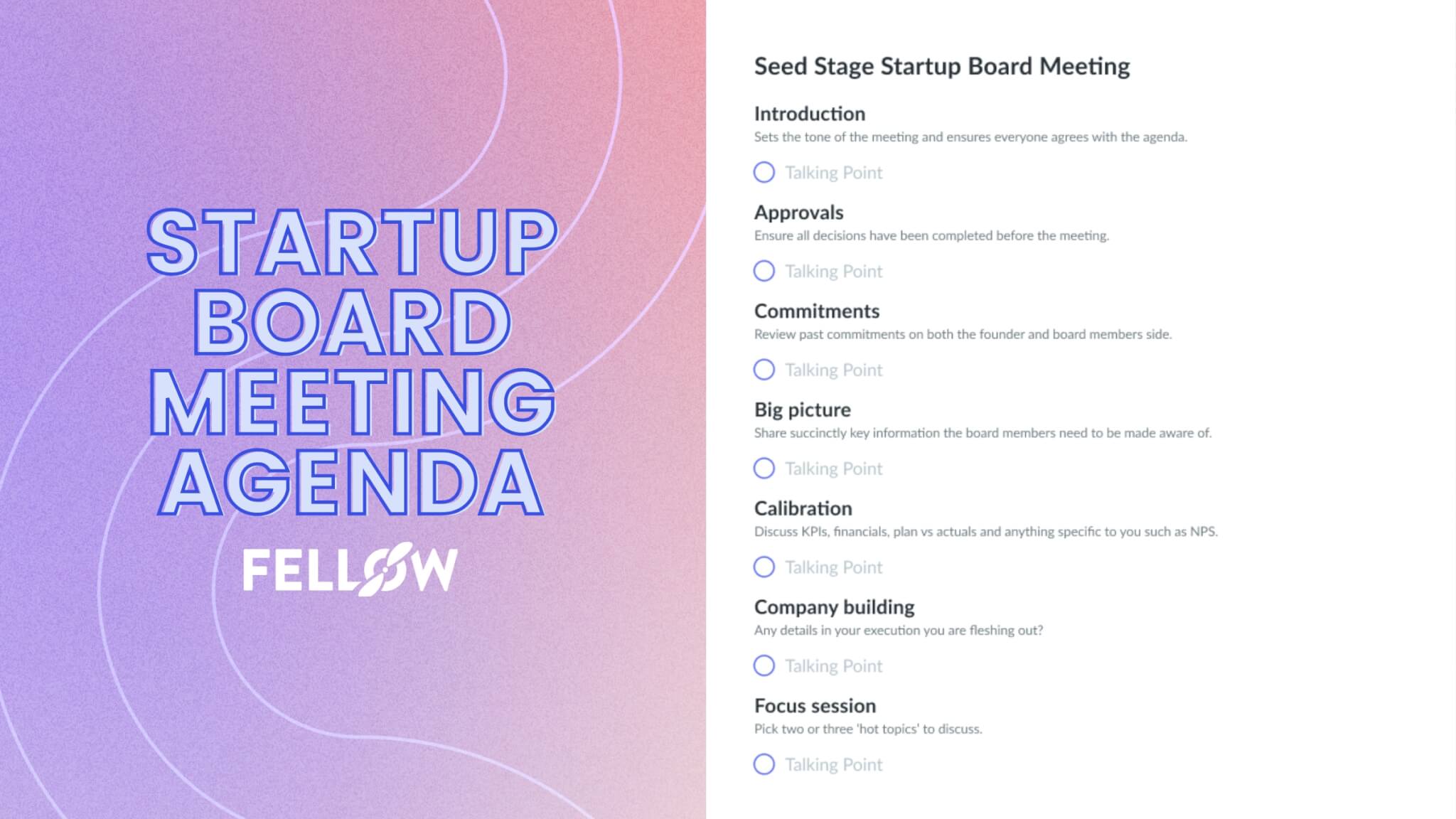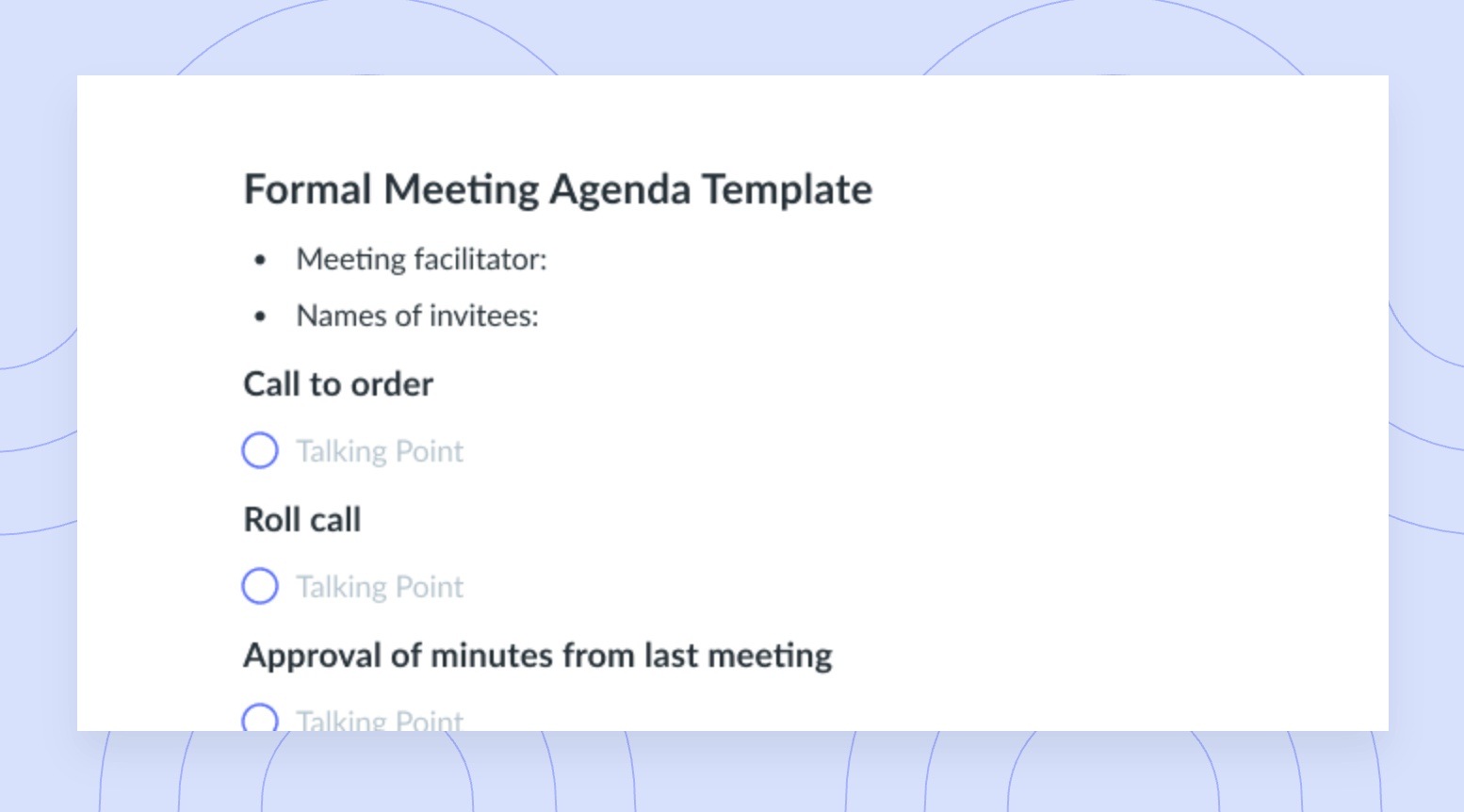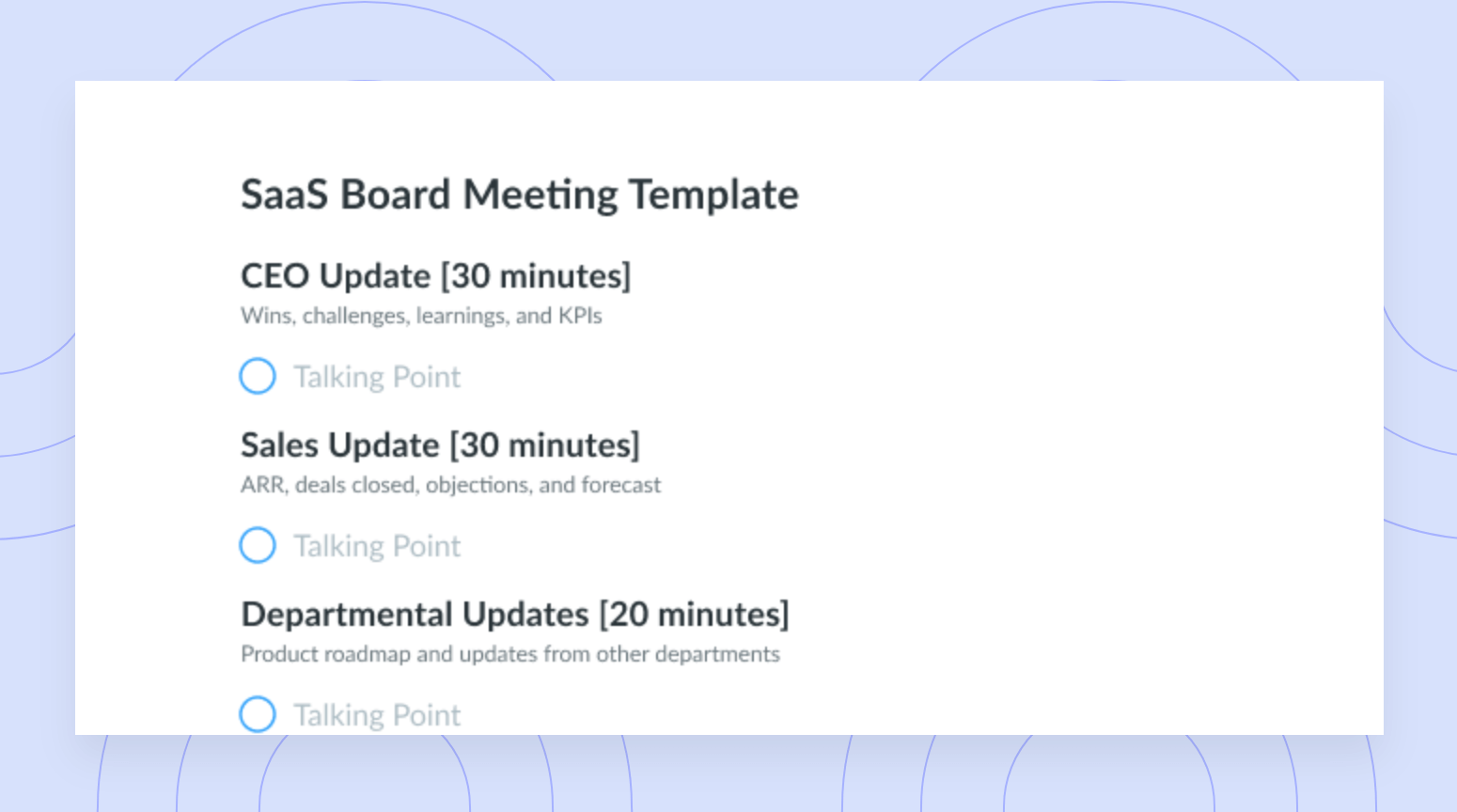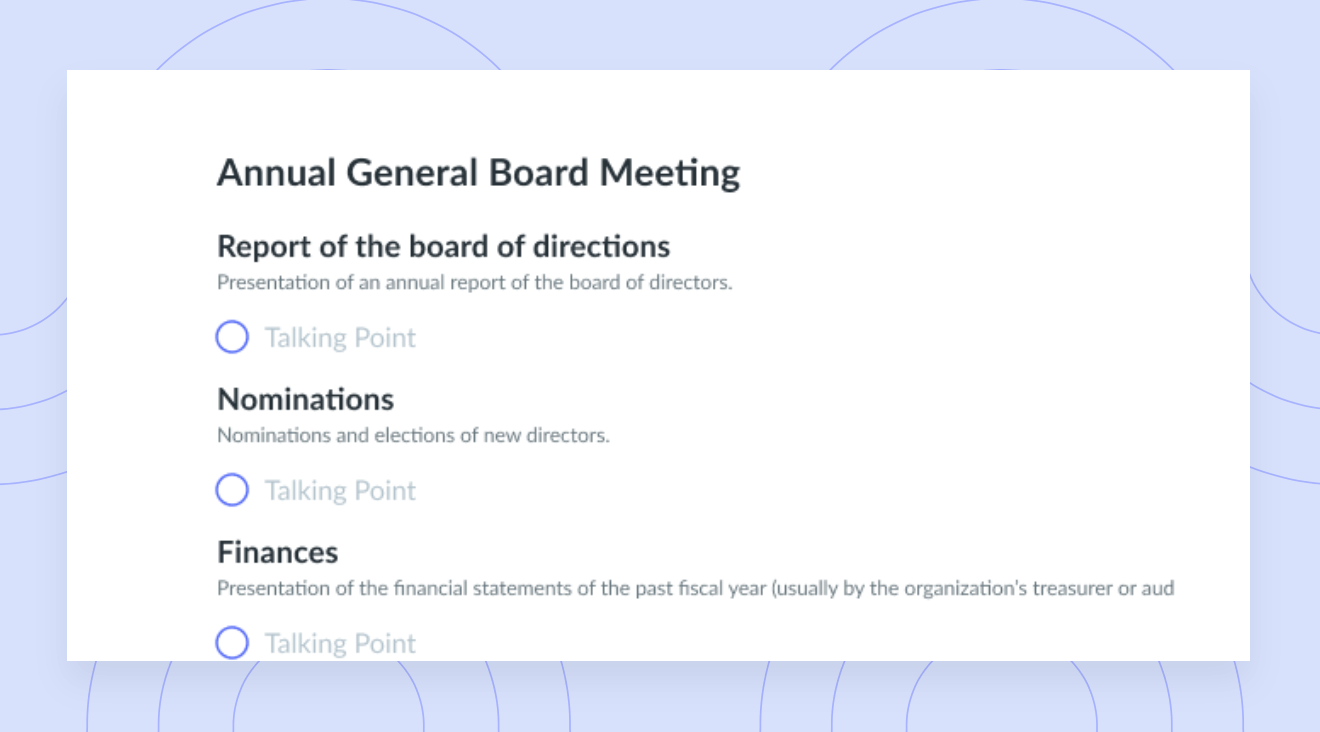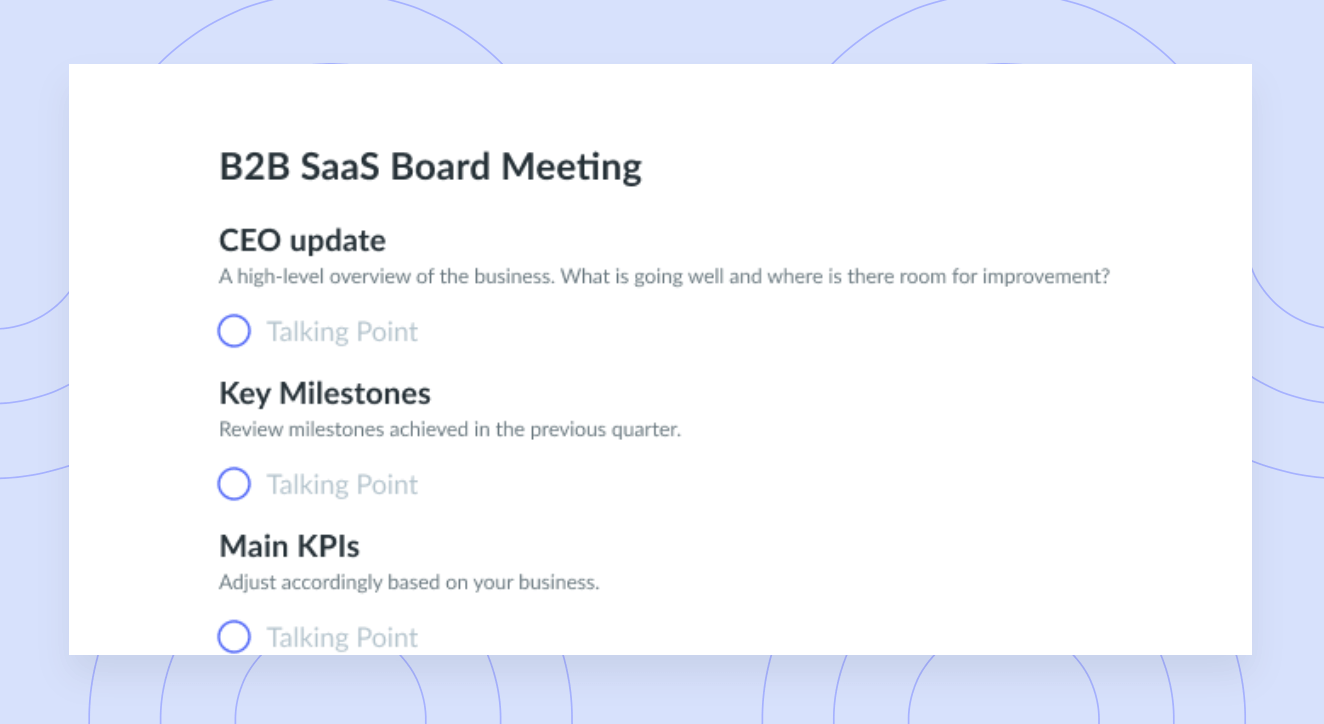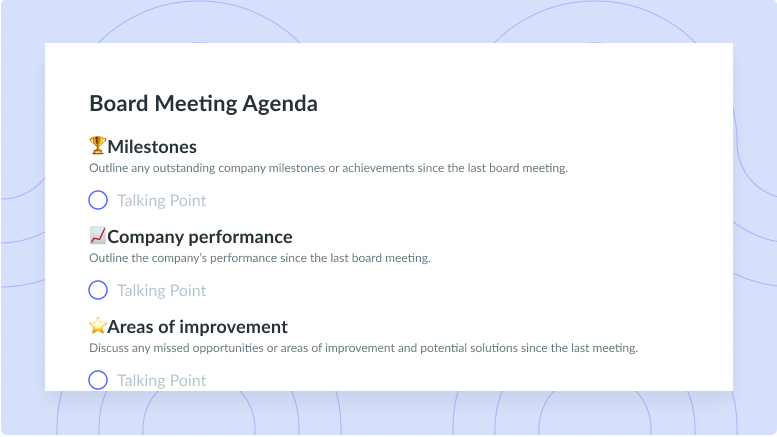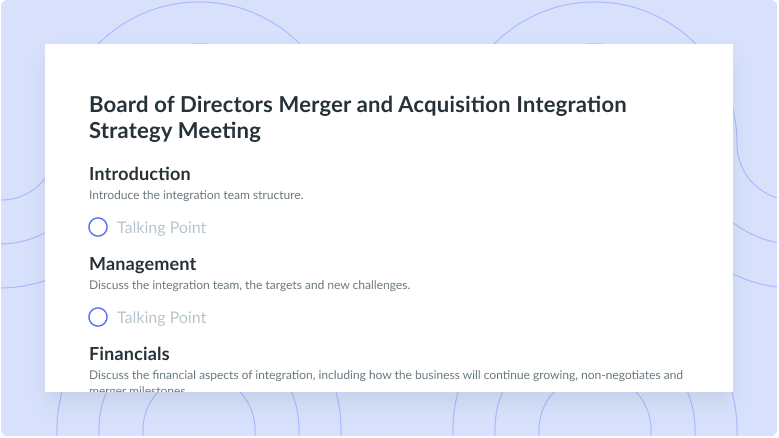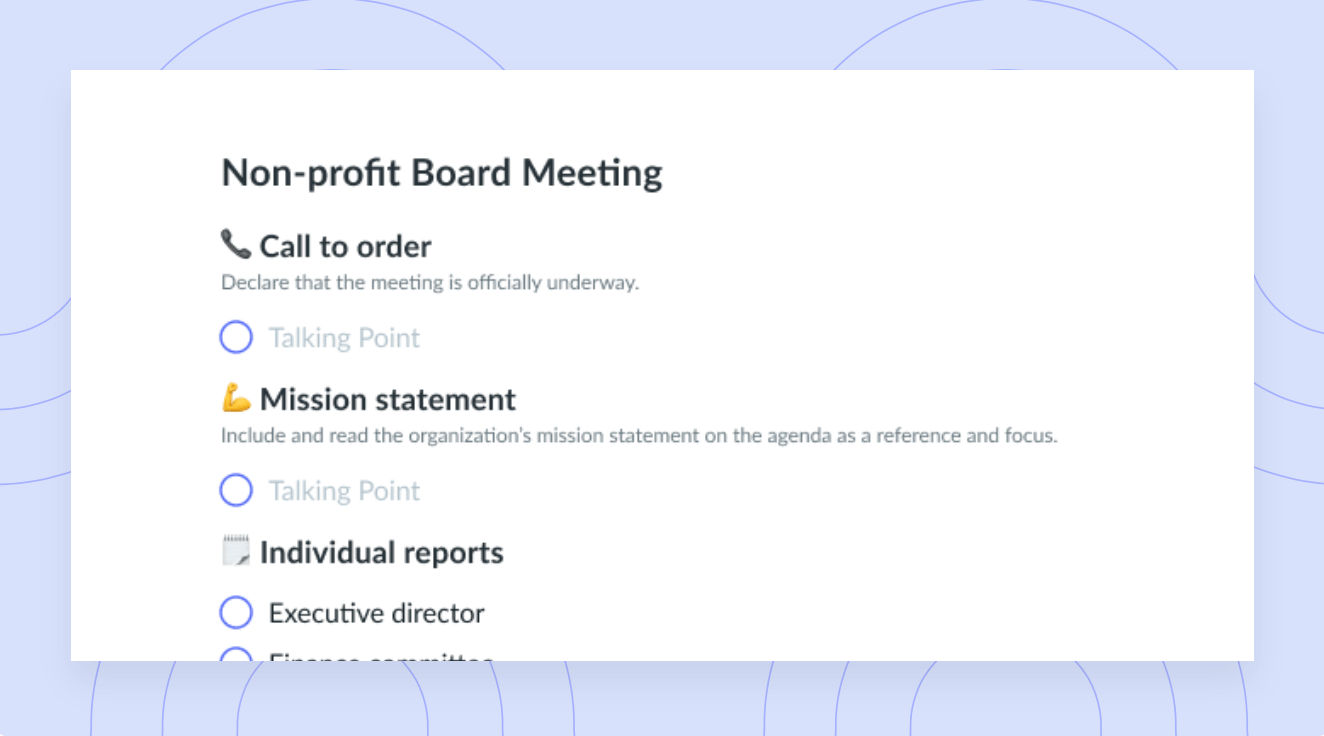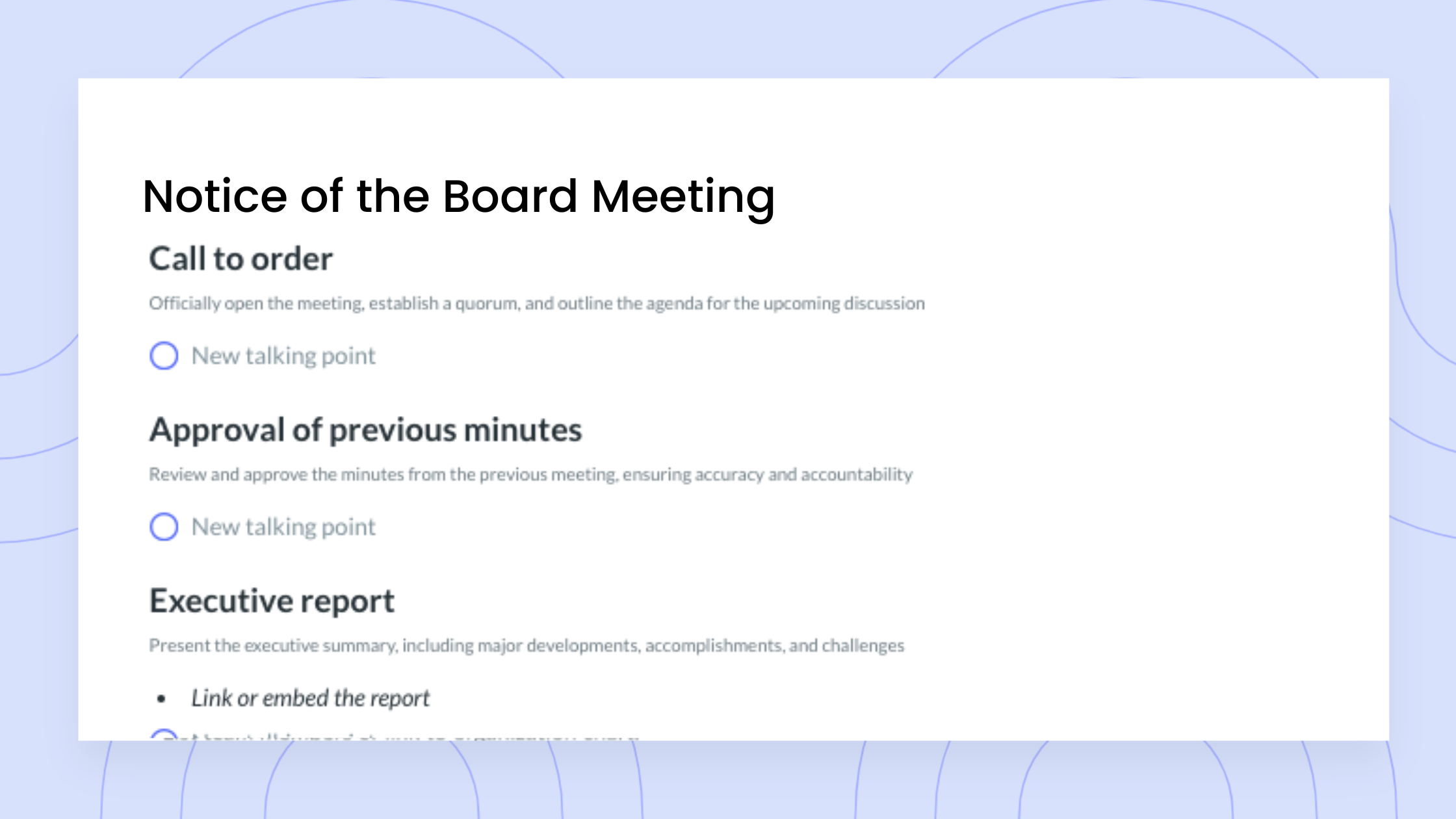How to Conduct a Board Meeting Effectively
We’ve outlined the importance of board meetings, how to open them and some tips for how to get the most out of them.
We all know that organization is essential in order to run effective board meetings. Often the most successful and effective meeting stems from the board of directors and board members being familiar and comfortable with parliamentary procedures, such as Robert’s Rules of Order, and in encouraging collaboration to promote board engagement.
For that reason, clear communication is key, along with solidified board meeting procedures, detailed agenda items, and where roles and responsibilities are outlined and understood. Preparation is key! This way the board chair and the directors can guide board members with innovative strategies that will promote progression for the business.
Wondering how to conduct a board meeting? Fellow has you covered. Here’s your guide on how to run a board meeting:
- What are board meetings?
- Why are board meetings so important?
- How to conduct a board meeting
- Examples of Board Meeting Agenda
- Tips for opening a board meeting
- Tips for running a board meeting
What are board meetings?
A board meeting is a formal discussion with an executive director, the board of directors and the board chair of an organization. The board of directors is a group of board members who meet to discuss strategic decisions and planning for the progression and success of the company. During this meeting, the team comes together and collaborates to create strategies on how to work towards achieving these goals and organizational milestones. The board typically discusses the current position of the organization, engages in goal-setting and strategic planning to achieve major goals.
Why are board meetings so important?
Board meetings are important for several reasons. They serve as a great opportunity to discuss the current position of the company and where the quorum is present to create new goals and strategize a means to achieve them. Here, you and your team can discuss both short-term and long-term planning initiatives and because meeting minutes will be recorded, they will serve as a historical record of these goals, making them easy to track, monitor and follow up on in the next meeting. Another reason why board meetings are so important is because of their formal documentation, as they provide legal protection for the organization. Often due diligence is captured in companies’ meeting minutes as well as any legal conversations which can then be officiated and documented to confirm the ethical, fair practices of the organization.
How to conduct a board meeting
In order to conduct an effective board meeting, focus on the company’s organizational performance, future strategies that will promote success and key performance indicators (KPIs).
Overall, the board of directors need to create strategies and agree on a means to achieve the goals that the board is setting. This is also an optimal time to discuss how to provide ongoing support to the company and the individuals who comprise it, so that it can continue to grow and thrive. It’s important to stick to the board meeting agenda items to keep a strict focus on the topics that matter, seeing as time is of the essence.
Examples of Board Meeting Agenda
Below is an overview of a formal board meeting agenda template and the areas you should report on as the minute taker.

If you are looking to run effective SaaS board meetings, try this template by David Sacks – entrepreneur, investor, and general partner of Craft Ventures.
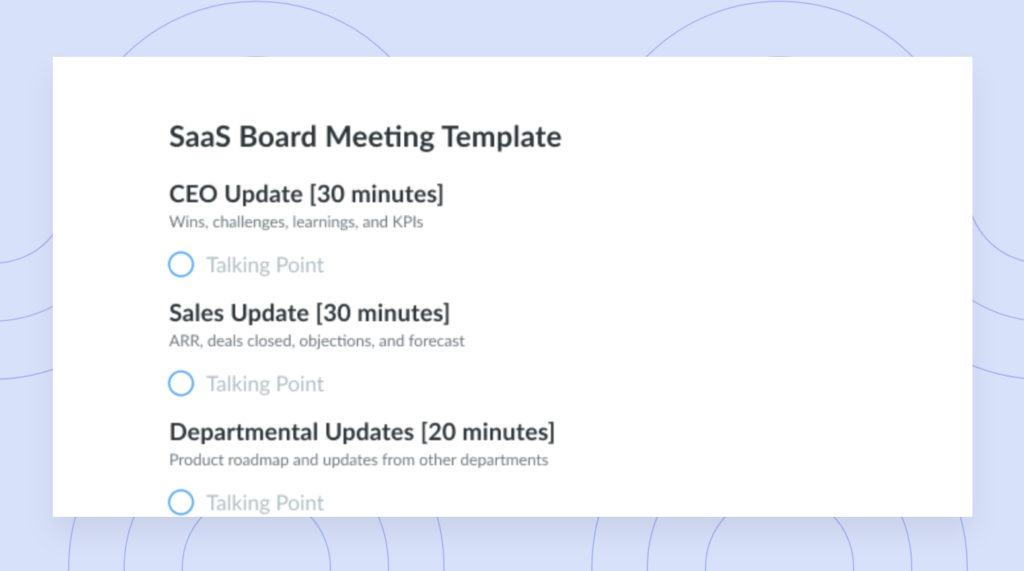
5 Tips for opening a board meeting
1 Share documents and the agenda in advance
Make sure to start by giving notice of a board meeting long before the date of the discussion. Share any important supporting documentation in advance so that all of the board members have time to prepare and look over any information which may be of use for the meeting. It’s also very important to share the meeting agenda in advance so that team members can make suggestions and collaborate on what the most important topics to discuss will be for this particular meeting.
2 Allow time for introductions and rapport building amongst directors
At the beginning of the meeting, it’s a good idea to introduce all members if you have a new addition to the team or to the board. Regardless, go around the table (even if it’s virtually) to re-introduce everyone and make sure all members are familiar with one another. Moreover, dedicate some time to have some informal conversations with your team members and check in with how everyone is doing. This is going to build rapport among the directors and allow you to work well together to come to important decisions.
3 Clarify each person’s specific role for the meeting
It’s important that each person participating in the meeting understands their roles and responsibilities. This is going to ensure efficacy amongst the board members. When each person’s roles and responsibilities are set out, team members can also collaborate knowing who is responsible for what, and where they may be able to lend a hand. It’s also going to make sure that everyone is paying attention to deadlines and ensuring they’re on top of their workload.
4 Take time to review and approve the agenda
Make sure to take the time to review and approve the meeting agenda. Again, this time is valuable and needs to be maximized. More than being efficient, it’s important to review and approve the agenda so that the formal meeting notes reflect a productive conversation with tangible outcomes. The meeting minutes serve as a historical record of the conversation, so it’s best to make sure that the content of the meeting is going to be beneficial for the progression of the organization.
5 Prepare one or two main issues to discuss
Don’t bite off more than you can chew. Choose one of two main issues to discuss so that you have the time to properly divulge each topic. It’s best to think about the most pressing issues, perhaps with the closest deadlines and work backwards from there. Picking one or two main issues is going to encourage a focused conversation with beneficial outcomes for the business.
5 Tips for running a board meeting
1 Start and end on time
This is a simple but important point. Punctuality is extremely important for each and every person taking part in the meeting. Being early is being on time for board meetings. It conveys to all of the participants that you value their time and insights they’ve come to share. The agenda has a start time, so be sure to stick to it. You and all of your team members are extremely busy, which means that you all need to respect each other’s time to keep the discussions running smoothly. Do not wait to start a meeting for any member, because it sends the wrong message. If you consistently push back your meeting start time, you encourage board members to arrive later and later.
2 Ensure full participation by all members
The reason the board of directors does not make decisions alone is because collaborative decisions are much more effective. For this reason, you really need to encourage the full participation of each individual at the table. Multiple perspectives are going to be beneficial in order to identify opportunities for improvements, goal-setting, strategizing and executing plans for success.
3 Favour group discussion over-reporting
Discussion is more important than reporting. The discussion is what is going to lead to making improvements to the business and in achieving organizational goals. This is not the time to talk about routine items that can be reviewed prior to the meeting via informal discussions, phone calls or emails. Dedicate this time for discussions that will move your mission forward through both governance and strategic planning. To foster even better discussion, come prepared with a list of questions that can prompt a productive conversation.
4 Tap into each member’s unique expertise
It’s going to work to your advantage to tap into each board member’s unique expertise and background. Each person can and should use their previous experiences to promote brainstorming, innovative ideas, and different approaches to planning and building on organizational strategy. Diversity in your board team is going to make for a stronger ability to make decisions that are going to benefit the organization and encourage growth.
5 Build the meeting agenda based on your organization’s goals
Make sure to build the meeting agenda based on the larger, overarching business goals. Preparing your meeting agenda ahead of time and aligning it with the direction in which the organization is headed is really important. Look at existing business strategies and ensure that you are incorporating small steps towards organizational goals into your board meeting agenda. Ensure that you’re not trying to cover too much material and create tangible action items that can be worked on immediately. Break down large board goals into smaller points that you can work on little by little until you achieve those major milestones.
Parting advice
It’s important to understand how to conduct a board meeting so that you can make the most out of your time, and achieve the most that you and your board members can. Remember to focus on preparation, planning, and really sticking to the board agenda meeting items. Encourage and promote collaboration so that each member’s unique background can bring meaningful and diverse strategic insights. Thanks for dropping by the Fellow blog! We’ll see you next time.






